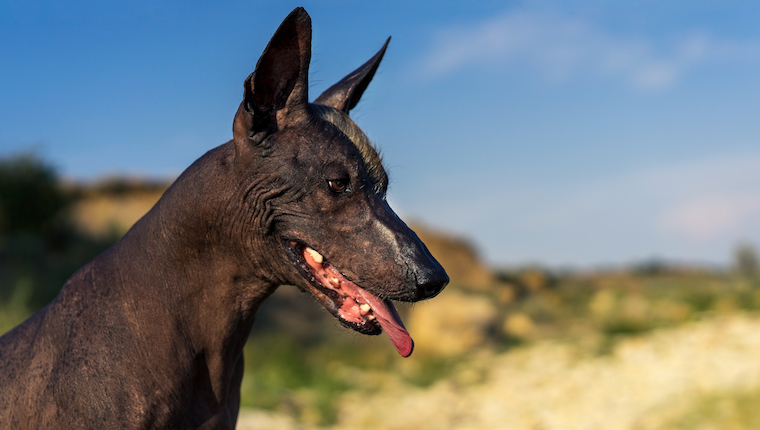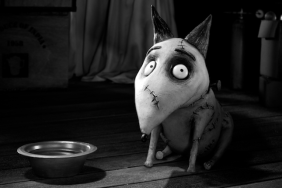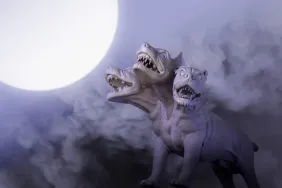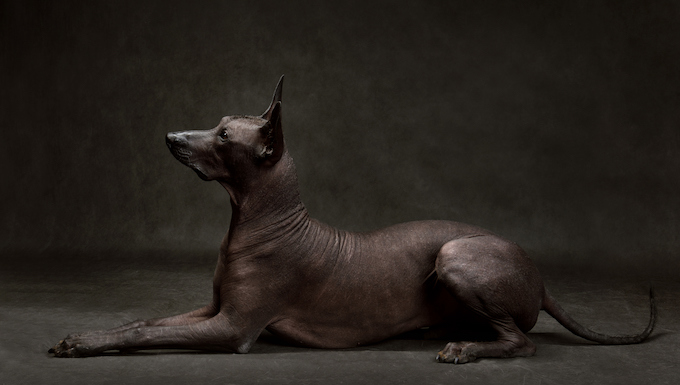
You’ve probably heard of Día de los Muertos, or Day of the Dead. What you may not know about is the ancient Mesoamerican dog breed imperative to its history.
According to the Aztec and Maya culture, the Xoloitzcuintli — Xolo for short — plays an important role in this holiday, which takes place from Oct. 31 to Nov. 2.
The Xolo’s Mythological Origins
Thought to be at least 3,500 years old, the Xoloitzcuintli is perhaps one of the most recognizable dog breeds today. With their piercing eyes, regal bone structure, and dark skin, you certainly wouldn’t confuse one of these hairless pups for a Golden Retriever. It’s not surprising that ancient civilizations considered the Xolo to possess special abilities.
From representation in ancient paintings to unearthed ceramics, Mesoamerican groups left plenty behind for historians to gauge just how important this breed was in their respective cultures. To understand the significance of the Xolo, look no further than the name itself: “Xolotl” is the Aztec god of fire, death, and lightening. Fittingly, the Aztec and Maya believed that this breed guided spirits through the underworld. Archeologists have found human skeletons buried with the remains of Xolos. This breed’s job as the chaperone of the afterlife comes in handy during Día de los Muertos.
Día de los Muertos and the Xolo
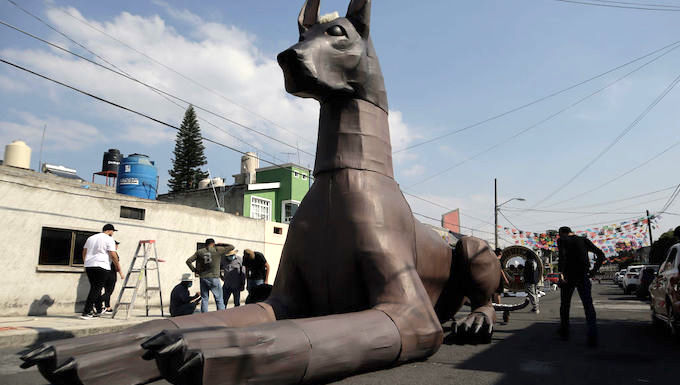
Día de los Muertos dates back 3,000 years. In ancient tradition, the souls of the dead had to cross nine levels of the underworld before being able to rest. During Día de los Muertos, the Aztec and Maya created offerings to aid them on this arduous journey. Modern day festivities include intricate offerings, or “ofrendas,” and parades, the largest of which takes place in Mexico City.
Although the holiday is more festive today, the Xoloitzcuintli remains a figure of great significance. In Tláhuac, a borough of Mexico City, a giant Xolo (pictured above) watches over the celebration. In addition to this massive tribute, many will place a ceramic Xolo on an ofrenda to symbolize safe passage.
More recently, Disney’s “Coco,” which is about Día de los Muertos, featured a clumsy Xolo named Dante. The name is most likely a cutesy nod to the levels of the underworld spoken of in ancient tradition. Dante helps Miguel, the film’s adorable protagonist, as he travels between the land of the living and the land of the dead. Because of the film’s popularity, Xolos are (deservingly) getting a little more spotlight than usual.
From Almost Extinct to Hypoallergenic Revival
When conquistadors landed in what came to be known as Central America, they began partaking in a customary cuisine: the Xolo.
Unfortunately, this led to the breed almost reaching extinction by the mid-20th century. Because eating our canine friends became less acceptable, the number of Xolos slowly increased. More recently, the breed has become much sought after due to its hypoallergenic qualities.
If you’re looking to adopt a Xolo, keep in mind that this breed is not for beginner dog parents. They are often stubborn, smart, and require consistent training. That said, they make fantastic companions if you are willing to put in the work, and their history as an ancient breed make them all the more fascinating.
Ancient Xoloitzcuintli Figures
-
Howling Canine, 5th-6th Century Mexico
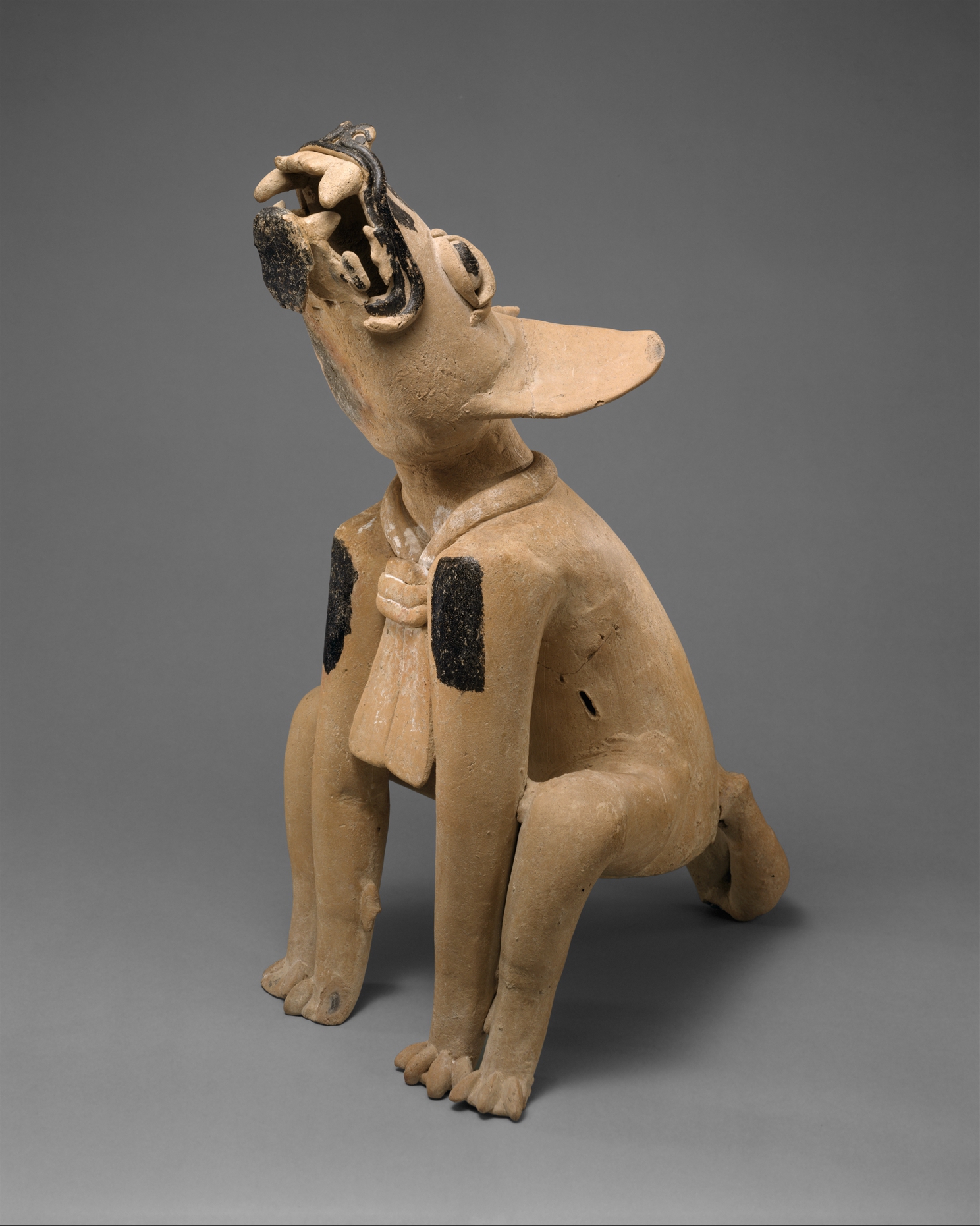
Images courtesy of The Met
-
Snarling Dog, 200 B.C.–A.D. 300 Mexico
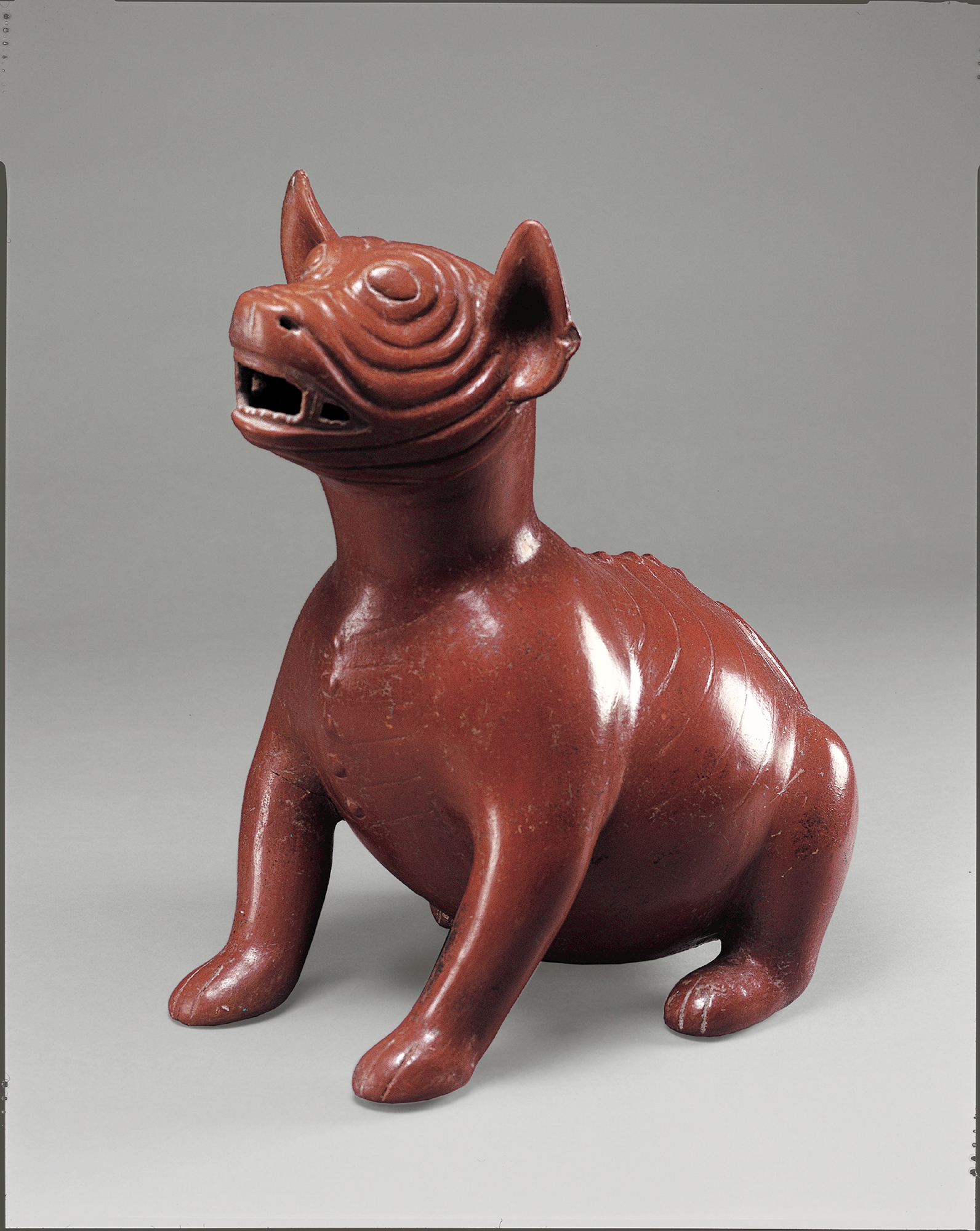
Images courtesy of The Met
-
Reclining Dog, 200 B.C.–A.D. 300 Mexico

Images courtesy of The Met
